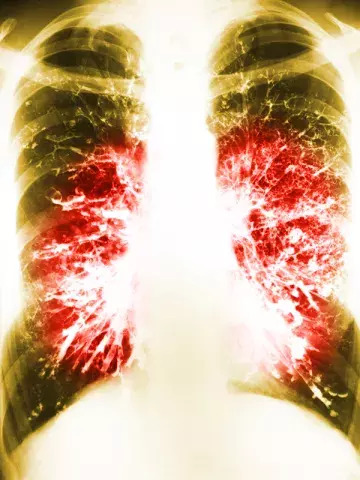High burden of bronchiectasis in Indigenous adults in the Northern Territory Top End
By Melanie Hinze
An Australian expert has highlighted the importance for rural health practitioners to consider bronchiectasis in their day-to-day clinical practice.
Associate Professor Subash Heraganahally, from Flinders University, Darwin, was commenting on his and colleagues’ research, published in the Medical Journal of Australia, that found the prevalence of bronchiectasis and associated all-cause mortality to be ‘alarmingly high’ among the adult Indigenous Australian population in the Northern Territory Top End.
Their retrospective cohort study, conducted between 2011 and 2020, identified 459 people with a chest CT-confirmed diagnosis of bronchiectasis among 23,722 indigenous adults living in the Top End Health Service region of the Northern Territory.
These patients had a median age of 47.5 years, 55.3% were women and 93% lived in areas classified as remote.
The researchers estimated the prevalence of bronchiectasis to be 19.4 per 1000 residents. The age-adjusted prevalence was 5.0 cases per 1000 people in the Darwin Urban health area, and 18 to 36 cases per 1000 in the three nonurban health areas.
The researchers reported that by 30 April 2023, 42.5% of people with bronchiectasis had died, at a median age of 60.3 years.
‘One unique clinical feature among Indigenous adults with bronchiectasis is the concurrent presence of other respiratory disorders, more specifically chronic obstructive pulmonary disease (COPD),’ Associate Professor Heraganahally, who is also Director of Darwin Respiratory and Sleep Health, and Respiratory and Sleep Medicine Specialist at Darwin Private Hospital and Royal Darwin Hospital, told Medicine Today.
He said that although COPD and bronchiectasis shared several similar clinical features, the management of these conditions differed. Hence, in clinical practice, he said it was extremely critical to determine whether bronchiectasis was a primary or a secondary condition and vice versa, especially when inhaled directed airway pharmacotherapy was considered.
‘The use of inhaled corticosteroids can have a detrimental effect among patients with isolated or predominant bronchiectasis by perpetrating recurrent infections, whereas, chest physiotherapy and sputum clearance technique may have a favourable long-term impact,’ Associate Professor Heraganahally said.
‘It is vital to understand the different demographic and clinical manifestations to optimise management of chronic lung disease among Indigenous adults to prevent ongoing morbidity and mortality,’ he added.
The researchers concluded that the sociodemographic and other factors that contributed to the high prevalence of bronchiectasis among Indigenous Australians needed to be further investigated so that interventions for reducing its burden could be developed.


